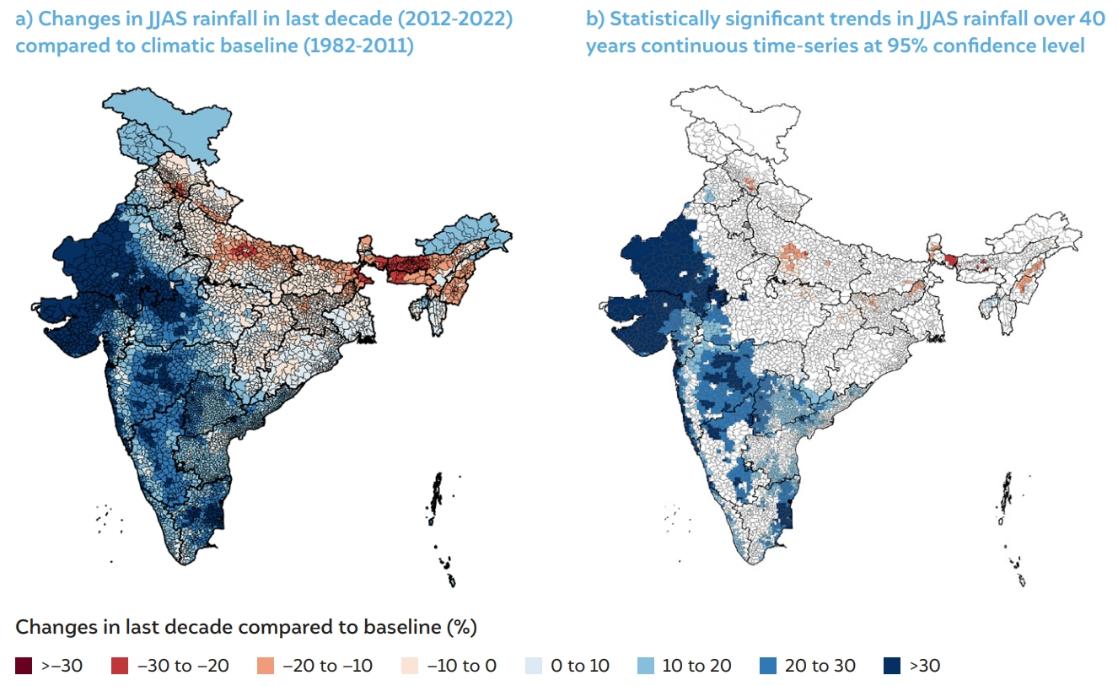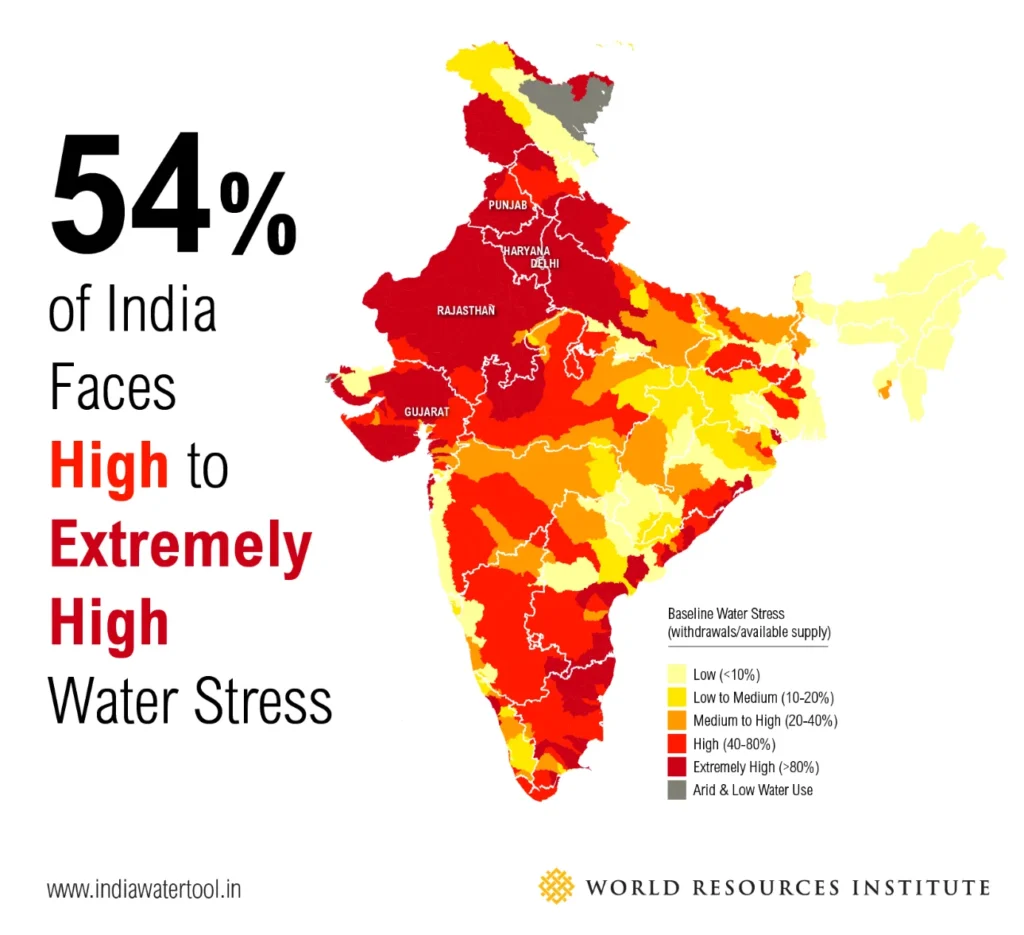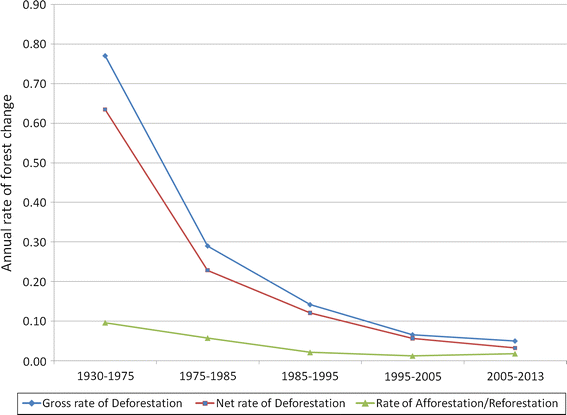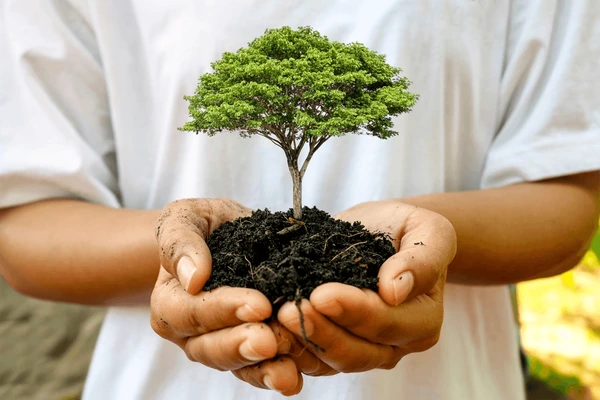Introduction
India is a diverse country known for its wide range of natural beauty. However, the ecosystem of the nation is facing threats of rising temperatures, warmer summers and degradation. Reports suggest that a quarter of land in the country is turning into desert with barren land and other severe problems. The collective effort of the factors increases the possibility of India becoming a desert. This article will shed more light on the topic with reasons and impacts of India turning an arid desert.
Also check our post on Gangotri Glacier Melting: The Ultimate Truth An Absolute Meltdown?
Causes of Desertification in India
Climate Change

With time India is threatened by extensive rising temperatures over 52 °C triggering extreme changes in climate conditions. For instance, around 11% of the Indian tehsils had witnessed a decrease in rainfall patterns by 10% in the past years as disclosed in the figure above. This has led to increased scenarios of droughts and land degradation which hints towards the potential desertification.
Unsustainable Water Use

Rapid urbanization and industrialization have triggered the overuse of water resulting in increased water scarcity and pollution. Moreover, the groundwater depletion rate is expanding and is projected to reach roughly 36 centimeters per year across India. This is because of the use of water-intensive crops, inadequate groundwater law and over-extraction of groundwater. Lack of water is a key reason supporting the possibility of India becoming a desert in the future.
Deforestation

India is threatened by the issue of excessive rates of deforestation. For instance, the deforestation rate of the country between 2015 and 2020 was around 668,00 hectares, the second highest in the global context. This is due to the conversion of forests into grazing areas, agricultural lands, and factory setups. Extensive loss of vegetation cover and soil compaction increases the possibility of India becoming a desert.
Click here to learn about recent smartphone leaks.
Consequences of Desertification
Environmental Impact
The major impact of India transforming into a desert is the loss of the country’s current biodiversity, extinction of animal species and endangered flora and fauna. Moreover, the diversified nature of the country will cease to exist starting in the southern region. For instance, reports suggest that Andhra Pradesh and Karnataka have shown instances of desertification by 0.19% and 0.5% respectively.
Social Impact
Desertification is destined to reduce the resources such as safe water and nutritious food available to the current population of India. People will tend to migrate to urban areas or regions outside India in the hope of achieving a better living. Furthermore, desert regions are prone to dust storms and degrading air quality which will affect the health of Indians with cardiovascular diseases.
Economic Impact
Desertification will hinder the performance of the agriculture sector which is a major source of income for India leading to unstable economic conditions. Lack of resources will lead to shifts of industries to more profitable areas with sufficient aid. Moreover, the possibility of India becoming a desert will decrease its beauty simultaneously hindering reducing the income from tourism currently enjoyed by the country.
Click here to learn about investing and finance.
Examples supporting the possibility of India becoming a desert
Deserts are among the most brutal places one can hope to survive in due to lack of food and water. The world is given sufficient examples of what may happen if excessive global warming and climate alterations. For instance, the Aral Sea located between Kazakhstan in the north and Uzbekistan in the south, has complementary dries up making its water toxic for wildlife and fish.
Additionally, the Kalahari Desert is warming at twice the global rate which is leading to its expansion as a result of overgrazing. Lastly, the Thar Desert of India has shown expansion in the last 20 years due to the growing pressures of human activities and historical climate changes. All the examples strengthen the possibility of India becoming a desert indicating the upcoming of a man-made catastrophe.
Possible Hopes

It is not too late navigate the possibility of India becoming a desert. Measures such as afforestation and sustainable land management are beneficial in resurrecting the stability of soil with enhanced water retention. Water conservation measures such as drip irrigation and rainwater harvesting are effective for supporting ground recharging and minimizing water pollution. The outlined measures may be simple but are very impactful for saving the country from ending up being a desert.